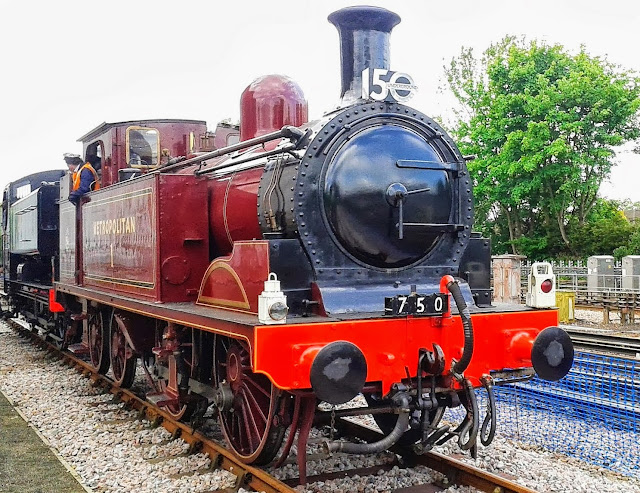 |
| Metropolitan 1 steam locomotive, celebrating 150 years of the Met line, in 2018. |
Living in Watford, which is the largest town in Hertfordshire, I have access to excellent transport links to London, as well as other areas of the country. Just 16 miles from Central London I have a choice of National Rail, London Overground services or Transport for London's Metropolitan line service. It is the latter that I invariably use.
 |
| Trains at Watford Metropolitan station awaiting the morning rush hour. |
The Metropolitan line station is just a 15 minute walk from my home and will get me to central London in just 40 minutes. I can also change to a different line like the Jubilee, while enroute, and end up in east London in a little over an hour.
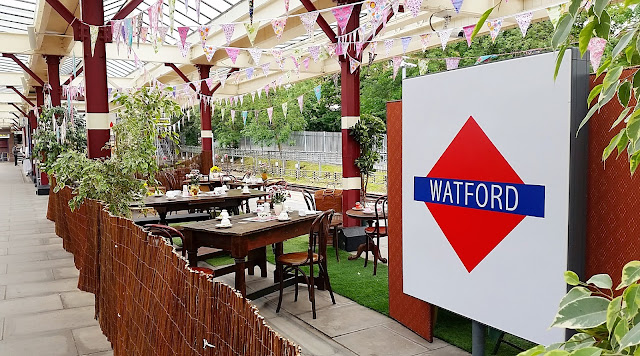 |
| Watford Metropolitan station decorated in celebration of 150 years. |
As this is the line that I most commonly use, and it being the first of its kind in the world, I thought I would do a blog about its history.
Brief History
In 1860 construction began on the world's first underground railway, which opened on January 10 1863, with the line running for just 3.75 miles from Paddington, passing through Edgware Road, Baker Street, Portland Road, Gower Street, King's Cross before terminating at Farringdon Street.
 |
| Baker Street architecture. |
In 1864 thoughts turned to extending the line and, in 1865, the extended line to Moorgate Street opened.
In 1868 the Metropolitan and St. John's Wood Railway opened a line between Baker Street and Swiss Cottage.
By 1872 the Metropolitan Railway had been extended from Paddington to Bayswater, Notting Hill Gate, Kensington High Street and Brompton. Aldersgate Street, between Farringdon Street and Moorgate Street also opened.
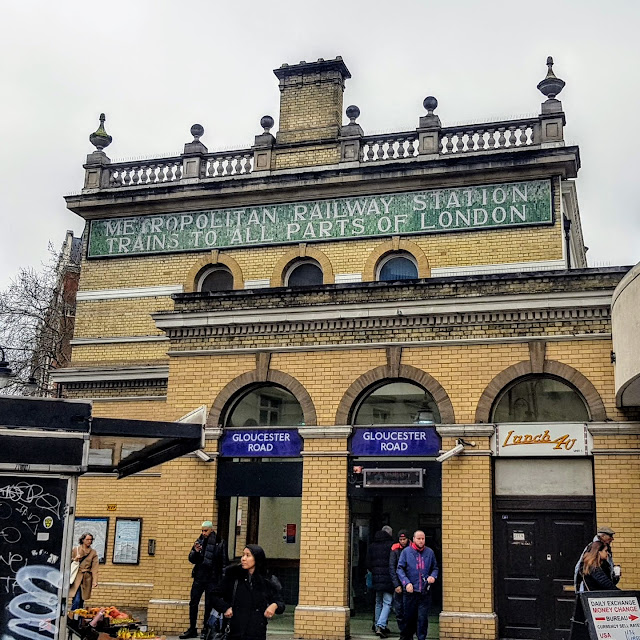 |
| Gloucester Road station. |
In 1873 the line from Baker Street to Swiss Cottage was extended to Neasden.
In 1879 the Metropolitan Railway absorbed the St. John's Wood Railway and began seeking permission to extend the line from Harrow to Aylesbury, in Buckinghamshire.
 |
| Gloucester Road station architecture. |
In 1885 the railway reached Pinner.
In 1887 trains began running to Rickmansworth in 1887.
In 1889 trains reached Chorley Wood and Chalfont & Latimer.
In 1891 the Metropolitan Railway took over the Aylesbury and Buckingham Railway and opened a permanent station was opened at Aylesbury in 1894, with trains running out to Stoke Mandeville.
 |
| Metropolitan 1 steam locomotive on its way to Amersham. |
In 1904 a branch line was created from Harrow-on-the-Hill to Uxbridge.
In 1905 the line was electrified between Baker Street and Harrow. It wouldn't be until 1925 that the line would be electrified to Rickmansworth.
In 1907 steam locomotives continued from Wembley Park on the unelectrified track.
In 1908 steam locomotives left from Harrow as more of the line was electrified.
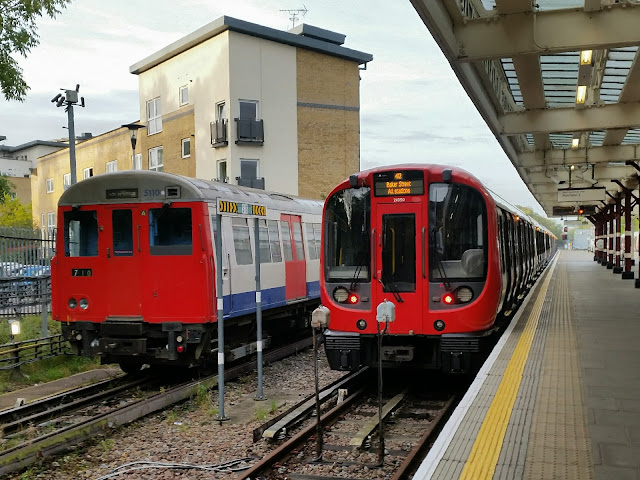 |
| Old and new trains at Watford Metropolitan station. |
In 1925 the line was extended from Moor Park via Croxley to Watford.
In 1932 the line was extended, again, from Wembley Park to Stanmore. This line lasted just 7 years, before it was transferred to the Bakerloo line.
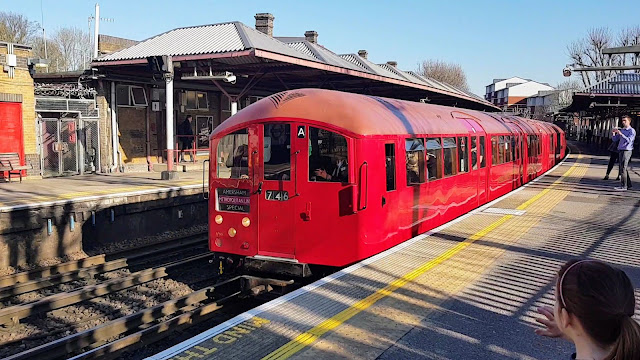 |
| London Transport 1938 stock running through Rickmansworth, 2019. |
In 1961 the line was electrified to Rickmansworth, with passengers transferring to a steam locomotive for stations to Amersham and beyond.
In 1964 the steam locomotives were withdrawn and were replaced with A-stock trains. All of the stations beyond Amersham were handed over to British Rail, as the cost to electrify the rest of the line would have been astronomical. This was the last year of Steam on the Met.
 |
| Metropolitan line plaque at Baker Street. |
Trivia
- The Metropolitan line is the third longest on the network at 41.5 miles
- Only 6 miles of the line are in tunnels
- It has 34 stations
- King's Cross St. Pancras is its busiest station
- The 3.89 miles between Chesham and Chalfont & Latimer is the longest distance between stations on the underground network
- Chesham is the most westerly point on the underground network
- Trains can reach up to 60mph on certain stretches of the line
No comments:
Post a Comment